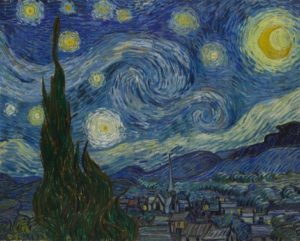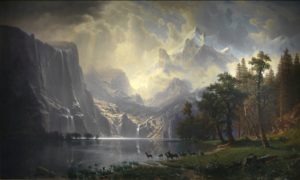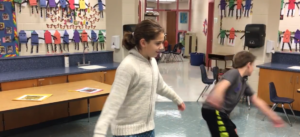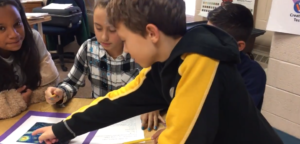DCPZ In Action, Vol. III: Emily Muha

“DCPZ In Action” is our feature that highlights the many ways in which DCPZ educators are using Project Zero ideas in their practice. We hope that our readers will be inspired to try something new in their own setting. Each of these articles will also be posted in a DCPZ Newsletter as well as published blog posts on our Professional Development Collaborative website.
In this edition, we hear about Emily Muha, an Art Specialist at Crossfield Elementary School (Fairfax County Public Schools).

After attending WISSIT for the first time in 2018, Emily Muha was excited to try out in her classroom some of the Project Zero-inspired tools and strategies she’d experienced. In particular, she was inspired by the “Move, Think, Wonder” course she took, facilitated by dancer Ingrid Zimmer of Inner City-Inner Child. Participants in the course engaged in a dance activity called “Name, Describe, Dance” (inspired by a Thinking Routine developed by PZ researcher Ron Ritchhart), which got her mental wheels churning. She decided to “approach looking at landscape paintings with [her] 5th graders in a totally new light.”


(from left to right) Haying, by Grant Wood (1939), National Gallery of Art, DC; The Starry Night,
by Vincent Van Gogh (1889), Museum of Modern Art.
Emily, collaborating with some of the music teachers at her school, wove in her own background in dance to create a four-part lesson for her students that opened up multi-sensory entry points to understanding and appreciating landscape paintings.

Coming Home, by Jeff Condon

Among the Sierra Nevada Mountains, by Albert Bierstadt (1868),
Smithsonian American Art Museum
Here is how she describes the lesson:
“Sitting in small groups of about four or five, the students were given a reproduction of a landscape painting with a handout with questions to answer. Each of the eight groups did some slow looking and were asked to write down five objects they saw in the painting and adjectives that would describe their piece. With this pool of words, each small group was then asked to choreograph a short dance by reflecting on the painting’s elements with their bodies as well as their minds. I worked with our music teachers to help me select pieces of music that would work with each painting but, I did not want to introduce the music to them until after they choreographed their dance. I have to say that I had no idea how this would fly! I was nervous but excited to give this a try. I just loved the idea of letting them guide me instead of the other way around.”

Watch this video of one group’s choreography process!
Overall, students enjoyed the opportunity to use their brains and bodies in a different way than they are accustomed to in classroom learning. Emily could feel the bright energy the students brought to the activity. “Knowing that they would share their dances with fellow classmates,” she said, “the students were enthusiastically focused on capturing the essence of their paintings.”
Reactions from the students ranged from “our group was scared to share it” to “it was a creative way to teach us.” One student commented, “It was fun to take a piece of art and make something creative and personal out of it. I feel that I understand points of view more after it. I would do it again.” Emily was pleased with the way it turned out. She was “really amazed at how the students’ were able to communicate, share, move, problem-solve, and build on each other’s ideas.”

Watch this video of students using slow looking with “Starry Night”
If she were to do it again, she would make tweaks here and there in order to give the students more time (four one-hour lessons didn’t feel sufficient), autonomy (they could pick their own music, with her approval), and space (they would move to the cafeteria instead of staying in her classroom). In an ideal world, she’d even have time to teach them some basic dance and performance techniques.
In the meantime, she’s introducing other PZ practices to her classes by using the Chalk Talk routine with her second graders to respond to each other’s artworks. She is enthusiastic about spreading her PZ “wings” and encouraging other teachers in her school to try out PZ ideas as well.